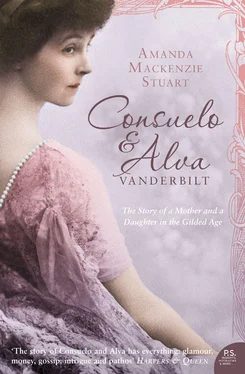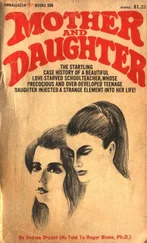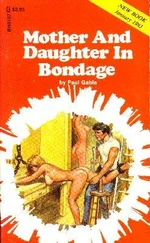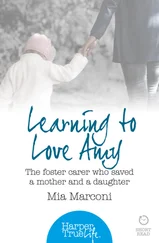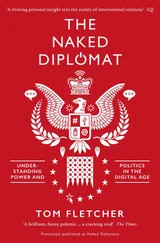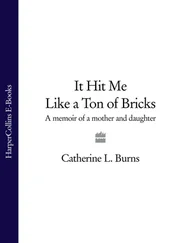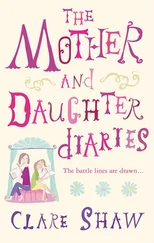However much Alva enjoyed motherhood she was also ambivalent about it – largely on the grounds that many women became mothers just at the moment they were finding themselves. ‘It is a formative time for them so far as intellect goes … [A young mother is] in a sense a diamond already cut and ready to sparkle as she can find the light. Yet for the sake of developing the unknown quantity which her children are she gradually slips back into the darkness.’ 46 Alva always felt that the equation between the perfect woman and virtuous female martyr was wrong. ‘The whole history of most women’s lives is summed in self-sacrifice. If it is not for a child whose future is uncertain then it is for an aged parent whose life is done. Again and again people have pointed out to me some splendid woman who was burying her talent under care for a decrepit relative. “Isn’t her life beautiful!” they would exclaim. No, it is not beautiful. I think it is disgusting. I think it is wicked,’ 47 she told Sara Bard Field.
In Alva’s case, talk of immolating maternal self-sacrifice should be treated with caution. This was not modern hands-on motherhood. Like other affluent households in New York in the 1880s, 660 Fifth Avenue had nursemaids, nannies, housemaids, governesses and cooks. The fact that Consuelo’s earliest years were so unmemorable has much to do with the disciplined and dull world of an affluent nineteenth-century nursery where the emphasis was on avoiding undue stimulation, building up the infant’s strength and avoiding infection. Even when her children were very young, Alva was occupied with other matters: designing and decorating houses with Richard Morris Hunt, ensuring the Vanderbilts were behaving like Medicis, taking her rightful place at the apex of New York society, as well as the complex task of managing two large households.
There is also no sign that Alva’s personality was in any way dimmed by maternity, though as each child left the nursery she certainly exercised an increasing degree of control over its life. Alva saw a direct relationship between building houses and building children: ‘If one can judge of her own self I would unhesitatingly say that the two strongest characteristics in me are the constructive and the maternal. They are or ought to be associated.’ 48 Children were, of course, the greater responsibility for here one was building character. Alva’s view of maternal responsibility was first, that the mother was directly responsible for developing the character of each child; second, that each child should be treated as an individual with an independent mind; and third, that it was the parent’s responsibility to ‘guide’ the child to the right course in life, based upon (and this was the rub) parental assessment of the child’s individual characteristics.
This view of maternal responsibility was, in many ways, an extension of the way Alva had described how she played with her dolls as a child (‘I loved dolls … I took them very seriously. I put into their china or sawdust bodies all my own feelings.’ 49 ) She frequently expected Consuelo to behave with the submission of a doll, a ‘china body’ on to which Alva projected all her own feelings. Consuelo was to be the princess in Sleeping Beauty’s palace. ‘Gertrude and I were heiresses ,’ Consuelo once told Louis Auchincloss. ‘There seemed never to have been a time when this was not made entirely clear.’ 50 She was even dressed to stand apart by Alva, forced into ‘period costume’ for parties and sniggered at by other children. However, this often clashed with Alva’s other view, which she held with equal conviction, that her children should be independent-minded individuals – like her, in other words. This contradiction at the heart of her approach to child-rearing was frequently irreconcilable and posed a very difficult conundrum for her offspring, especially Consuelo. Should they please her by submitting to her as doll-children? Or would Alva be more contented if they showed signs of independence? It was often very difficult to know.
In practice, submission to Alva’s will generally took priority. It was, in any case, an age when inculcating obedience in children was widely considered a major parental responsibility, the first step in developing moral character. Childcare manuals of the period recommended that obedience training should start as early as twelve or fourteen months to encourage ‘self-control and self-denial, and advancing a step towards the mastery of [the child’s] passions’. 51 If obedience was important in boys, it was essential in girls. ‘We were the last to be subjected to a harsh parental discipline,’ Consuelo wrote. ‘In my youth, children were to be seen but not heard; implicit obedience was an obligation from which one could not conscientiously escape.’ 52
Even by the standards of the day, however, Alva was a ferocious disciplinarian, administering corporal punishment with a riding-whip for the most minor acts of delinquency. When Alva was a child, her mother’s whippings had had little effect. But a less headstrong personality like Consuelo could still feel the impact in old age. ‘Such repressive measures bred inhibitions and even now I can trace their effects,’ 53 she wrote later. Most difficult of all, perhaps, was the stomach-knotting tension induced by a mother with a volatile and ferocious temper: ‘Her dynamic energy and her quick mind, together with her varied interests, made her a delightful companion. But the bane of her life and of those who shared it was a violent temper that, like a tempest, at times engulfed us all.’ 54
While Alva certainly took time to be with her children it was not quite the unalloyed pleasure for her offspring that she seemed to imagine. ‘The hour we spent in our parents’ company after the supper we took with our governess at six can in no sense be described as the Children’s Hour,’ wrote her daughter. ‘No books or games were provided; we sat and listened to the conversation of the grown-ups and longed for the release that their departure to dress for dinner would bring.’ 55 Alva lunched with her children almost every day for seventeen years, refusing (or so she later claimed) all social invitations in the middle of the day so that she could be available to her children. While she maintained that these lunches were the ‘children’s dining table’, an ‘open forum’ at which ‘everyone’s opinion was gravely received’ even when there were adult guests present, Consuelo remembered longing to express a view but invariably being repressed by a look from Mamma.
Having one’s character developed by Alva could also be a brutal experience. ‘Sitting up straight was one of the crucial tests of ladylike behaviour. A horrible instrument was devised which I had to wear when doing my lessons. It was a steel rod which ran down my spine and was strapped at my waist and over my shoulders – another strap went around my forehead to the rod. I had to hold my book high when reading, and it was almost impossible to write in so uncomfortable a position.’ 56 Later, however, Consuelo attributed her famous straight back in old age to this dreadful device.
One result of Alva’s passionate involvement in her children’s upbringing was that, unlike cousin Gertrude who went to school, Consuelo was educated almost entirely at home so that Alva could oversee her doll-child’s educational curriculum. Alva wanted to educate her sons at home too but lost the battle. ‘I regretted very much the sending of my sons to preparatory schools. Personally I did not see the necessity of it. When parents have the intelligence required to guide and direct youth, I think it is better for children to stay at home as long as possible. I neither appreciate nor approve the theory held by many as to the value of outside influence in the rearing of children.’ 57 In particular Alva objected to the ‘one-size-fits-all approach to education she felt had failed her badly as a child. It is likely that William K. was just as certain that only boarding school stood four square between his sons and total domination by their mother.
Читать дальше
